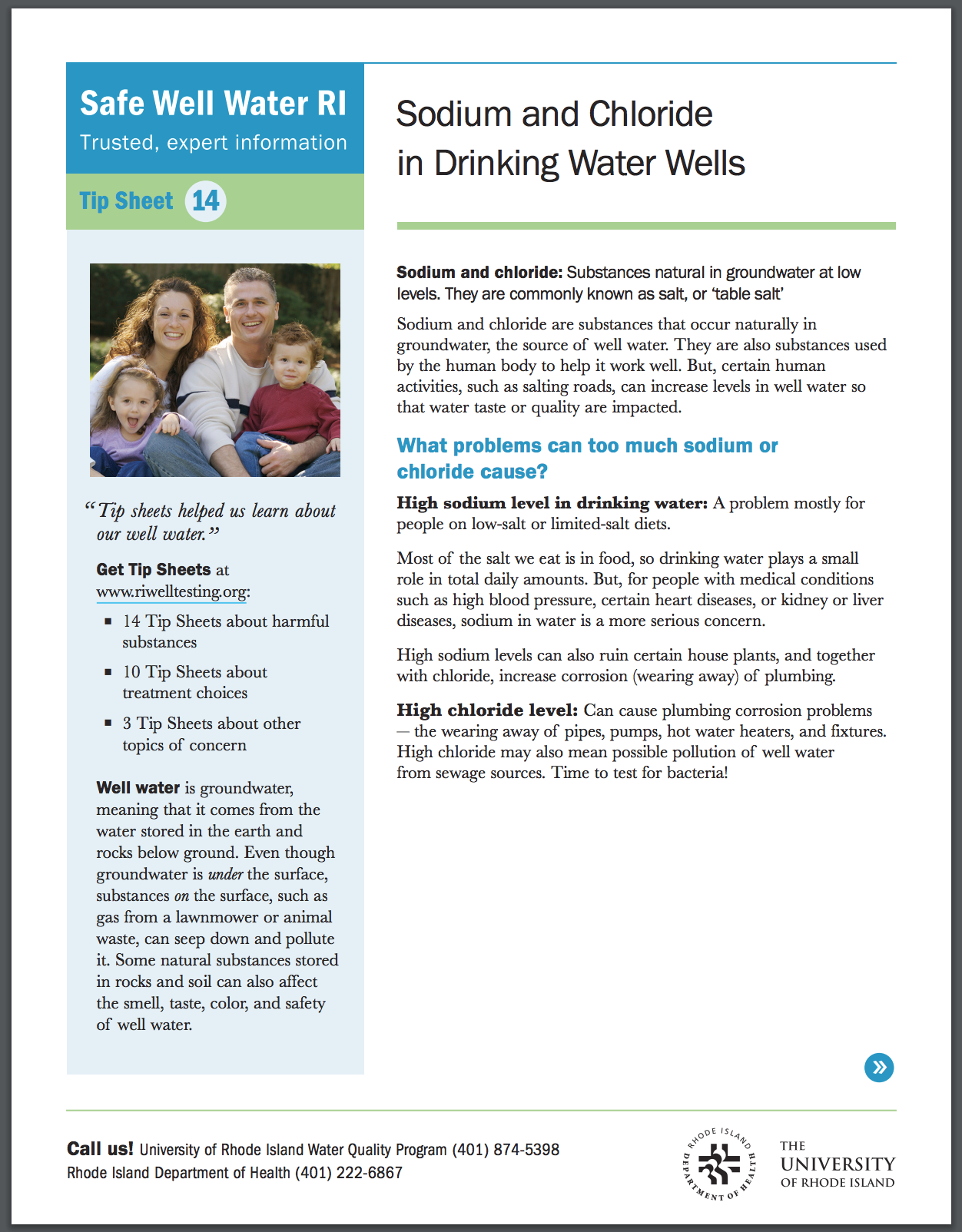
Calcium Chloride is another salt that can introduce chloride ions into the groundwater.
Chloride is the Cl- ion of numerous salts, including the ubiquitous NaCl (ocean and table salt).
Chloride in a well is associated with infiltration of road salts, fertilizer, backwash from a water softener and even seawater.
It is not considered a health hazard. However, an aesthetic standard exists: the average person notices a salty taste when chloride hits 250 mg/L.
Chloride can impact household plumbing: it increases the conductivity of water, and is therefore more corrosive of metal plumbing pipes. As the pipes are corroded, metals are dissolved into the water passing through them.
Health Limit
Not established.
Aesthetic Limit
USA Secondary Drinking Water Standard limit: 250 mg/L
Additional Resources
Wikipedia: "Chloride"
World Health Organization, "Chloride in Drinking-water: Background document for development WHO Guidelines for Drinking-water Quality" (1996, 9 pg. pdf)
Sodium and Chloride in Drinking Water Wells, University of Rhode Island (2 pg. .pdf)
MEL Test Methods for Chloride
Drinking Water - EPA Method 300.0 Rev. 2.1 (SDWA Compliant)
Wastewater –EPA Method 300.0 Rev. 2.1 (NPDES Compliant)
Solids & NPW – Method 9056A (SW846 /RCRA Compliant)
Sample Requirements
Wastewater:
Container: plastic, glass
Volume: 60 mL
Hold Time: 28 days
Preservation: ≤6°C
Solids:
Container: plastic, glass, baggie
Volume: n/a
Hold Time: 28 days
Preservation: ≤6°C
